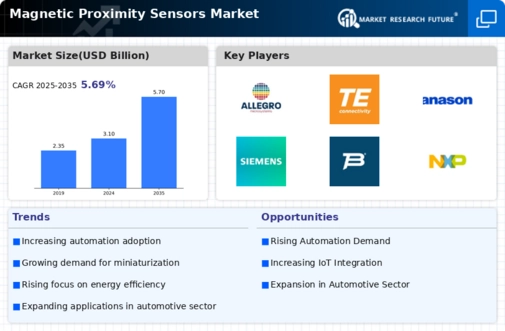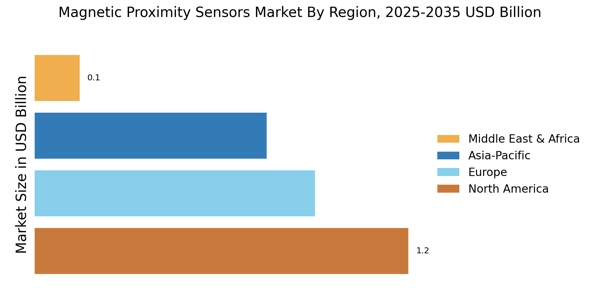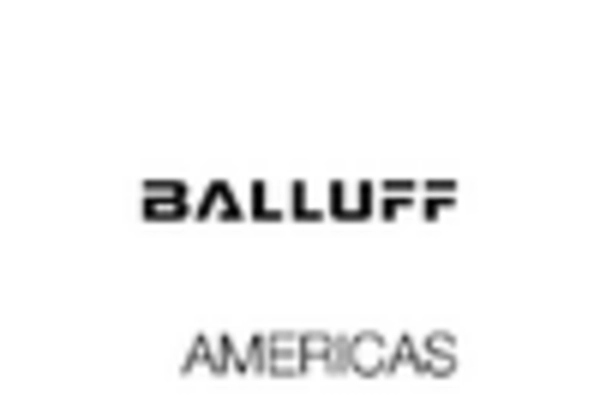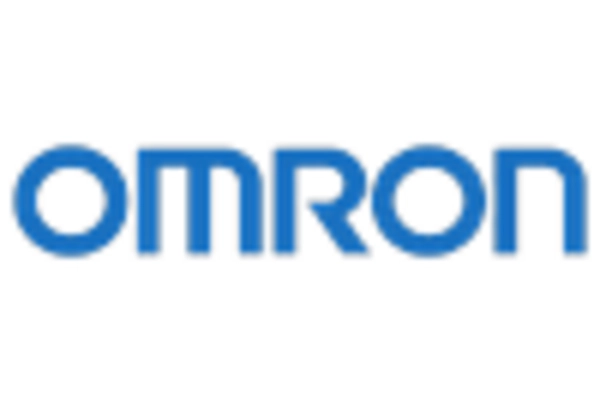Expansion of the Automotive Sector
The automotive industry is experiencing a notable transformation, with a significant shift towards electric vehicles and advanced driver-assistance systems. This evolution is driving the demand for Magnetic Proximity Sensors Market, as these sensors are essential for various applications, including position sensing and safety features. The automotive sector is expected to witness a growth rate of around 7% annually, which could lead to an increased requirement for magnetic proximity sensors. Their ability to provide accurate and reliable data in challenging environments makes them indispensable in modern automotive applications, thereby contributing to the overall expansion of the Magnetic Proximity Sensors Market.
Increased Focus on Safety and Security
Safety and security concerns are becoming paramount across various sectors, including manufacturing, transportation, and residential applications. The Magnetic Proximity Sensors Market is benefiting from this heightened focus, as these sensors are integral to safety systems, such as intrusion detection and equipment safeguarding. The market for safety sensors is projected to grow significantly, with estimates suggesting a rise of approximately 8% in the next few years. This trend indicates a robust demand for magnetic proximity sensors, which offer reliable performance in detecting the presence of objects or individuals, thus enhancing safety measures across diverse applications.
Growing Demand for Consumer Electronics
The consumer electronics sector is witnessing a rapid expansion, with an increasing number of devices requiring precise sensing capabilities. This trend is positively impacting the Magnetic Proximity Sensors Market, as these sensors are widely used in smartphones, home appliances, and wearable technology. The consumer electronics market is projected to grow at a rate of approximately 6% annually, which could lead to a heightened demand for magnetic proximity sensors. Their ability to provide reliable performance in compact designs makes them essential for modern electronic devices, thereby driving the growth of the Magnetic Proximity Sensors Market.
Rising Adoption in Industrial Automation
The increasing integration of automation in various industries is a primary driver for the Magnetic Proximity Sensors Market. As industries strive for enhanced efficiency and reduced operational costs, the demand for reliable sensing solutions has surged. Magnetic proximity sensors, known for their durability and precision, are being widely adopted in manufacturing processes, assembly lines, and robotics. According to recent data, the industrial automation sector is projected to grow at a compound annual growth rate of approximately 9% over the next five years. This growth is likely to propel the Magnetic Proximity Sensors Market, as these sensors play a crucial role in ensuring seamless operations and minimizing downtime.
Technological Innovations in Sensor Design
Technological advancements in sensor design and functionality are driving the evolution of the Magnetic Proximity Sensors Market. Innovations such as miniaturization, improved sensitivity, and enhanced connectivity options are making these sensors more versatile and appealing to various industries. The introduction of smart sensors, which can communicate with other devices and systems, is particularly noteworthy. This trend is expected to contribute to a market growth rate of around 10% in the coming years. As industries increasingly seek advanced sensing solutions, the Magnetic Proximity Sensors Market is likely to experience a surge in demand, driven by these technological innovations.

















Leave a Comment